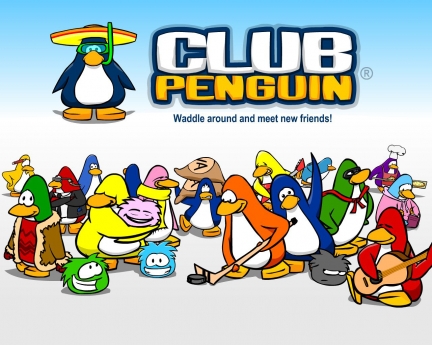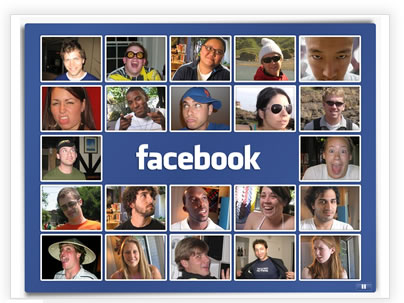Social Media on the decline?
A number of commentators are waxing lyrical about the decline of social media, almost to the extent that they urging it to happen.
So whilst Twitter is growing, but not at the alarming rates of Facebook and MySpace before it, MySpace is in decline and Facebook seems to have plateaued, has social media really had its day?
Personally I don’t think web users will swap from owning the media to reverting back to receiving messages that media owners and organisations choose. The issues seem to centre around younger audiences moving away from the likes of Facebook as the older generations engage.
So as the teens and 20-somethings move from Facebook because of the oldies, the really young youngsters have never really been into it. They have their own communities. Before we explore this phenomenon, lets look at the figures. So according to Hitwise, Twitter and MySpace share roughly the same number of visitors, a lowly 0.25% of all Internet traffic. However, as you can read from a previous post in this blog the same source (Hitwise) reveals MySpace has a bigger share of social networking traffic in the UK than Twitter. Putting that to one side we must also consider that these numbers may not take into consideration the mass use of both Twitter and Facebook on mobiles and SmartPhones such as the iPhone.
The other commentary surrounding social media at the present time is the sense that younger audiences are moving away from the likes of Facebook or not engaging with Twitter because nosey oldies are now on those sites. (No we aren’t on to the topic of the really young yet) What self-respecting 17 year old wants to be seen regularly in the same place as their mum and dad. Again, it may be that the younger Facebook audience are using the interface on different devices. So Facebok is lining up solutions such as the well reported Facebook 3.0 to try and retain some of its appeal to the younger audiences.
What about the real youngsters?
So here we are. The real youngsters have never engaged with the mainstream social media sites we all know. Partly due to age restrictions, although that doesn’t stop most teens. More importantly because they don’t see those sites as being for them. Kids have their own areas. Areas they can meet up, interact and drive what they want to see. As you would expect from most of these sites they are far more interactive, with more tasks and games built in to the overall concept. The majority have you playing as a character, as much to protect the child’s identity as to help them immerse themselves into the virtual world (similar to Second Life). These platforms are sometime known as MMOG (massively multiplayer online games)
What this means is that the platforms are more content rich and graphically more advanced than the likes of Facebook or the closest to youngsters Social Networking, Bebo. This also allows for greater adoption of add-ons or Marketing to younger people. I will illustrate what I mean by add-ons when I cover some of the examples. The Marketing opportunities are massive though. There are very few places where younger audiences congregate with the single purpose to interact with each other and embrace the community put in front of them. Whilst we all have to be careful to obey the strict rules in connection to marketing to children, if you have a place, these are great environments.
This isn’t just my point of view. Disney payed a multi-million pound sum for Club Penguin and have began to reap the rewards both in online and real-world situations. Lego have also identified this as a fruitful area and are planning to launch Lego Universe in 2010. Lego Universe will cover a range of games and interaction, where no doubt there will be a merchandising tie-in and charges for certain components of the site. Below are a few examples of these sites, all with a common theme. Above the standard social aspects are themes and games that appeal to a younger audience, encouraging a rich level of interaction.
Club Penguin
Club Penguin is a virtual world of snow and ice. Your profile is based around a cartoon penguin as your avatar. You have an igloo (your base) and you can build it up, fill it with things and let others come and see it. There is full interaction to encourage the social element and special events for the visitors to participate in.
Whilst anybody can go on, the revenue is driven primarily throuh membership, which can now also be bought throguh Disney shops and Sainsburys or online through the site itself. The site has well over 12m members, who reguarly visit and spend an age interacting. Club Penguin is such a success, after going live following a Beta test in 2005, it was bought by Disney in 2007 for $350m. The entertainment giant has extended the revenue opportunities through the environment and even pushes merchandise through its netwrk of Disney stores.
Habbo Hotel
Possibly one of the biggest sites for teens, Habbo Hotel has a massive 118m avatars registered and over 8m UVs monthly. It is said by publishers Sulake that 75,000 new avatars are being registered every day. The main areas, are groups, chat and discussion board as well as the hotel itself. This is where you can place extras in your room (at a real cost) and invite other Habbo inhabitants round to see and party.
The site began as a hobby in 1999 and as a result of funding for a virtual hotel game gained its place on the web in 2000.
 Stardoll
Stardoll
Stardoll as you would expect is really targetted towards girls. You get the oppotunity to dress your cartoon doll up in costumes and buy accessories to make it look better The community vote and extra points are awarded. The site has over 40m members (majority girls) that of course have an interest in fashion and celebrities. The site also boasts a user generated fashion magazine and chat, forums etc. Avril Lavigne and Hilary Duff are represented on the site as are a number of fashion labels.

Poptropica
Poptropica has over 13m visitors and is an iland based VR game. Very cartoon focussed where visitor have to take on roles and complete challenges. This site is more of a game with bolt on social elements and is given an edge with its Head to Head competitions. There is also a Reality TV Island base on reality TV show Survivor.
So its all good then?
Well if we could be sure that everybody present on these sites were who they say they are then yes. There are a number of key issues that were identified when I spoke to parents that I know. The most obvious issue is child safety and the fact that these sites are targeted at children, nefarious older people can easily join. One case took place in Holland in 2004 where a 36 year old man was imprisoned for targeting a young girl and getting her to meet him. There have also been theft s of virtual furniture, which in essence is real theft as these were paid for add-ons.
Other issues were thought to stem around links being disguised as innocent content that children would click on. These could dupe the youngster into receiving unsuitable material or download rogue software such as key loggers or Malware.
It is thought by the parents that I spoke to that more should be done to protect youngsters, for them to feel these communities were safe, before they will let their children freely use them in the same way you or I might use Facebook. These protections should be put in place to ensure both the safety of the users bu also to avoid any contoversy that could also have a massive effect in their publishers such as Disney or advetisers on the site.
One thing is certain in my mind. Social media in whatever form it takes is here to stay. It may evolve and users may be less loyal to communities as others develop. However, regardless of age or gender, the internet plays such a central part in our lives, social media is here and will be for a long time. That is, unless we find out the reason younger audiences were moving away from Facebook is actually becuase they have realised that there is an outdoors and actually speak face to face with people rather than online. You never know.


 and Switzerland.
and Switzerland.  that many people completely ignore is
that many people completely ignore is 


